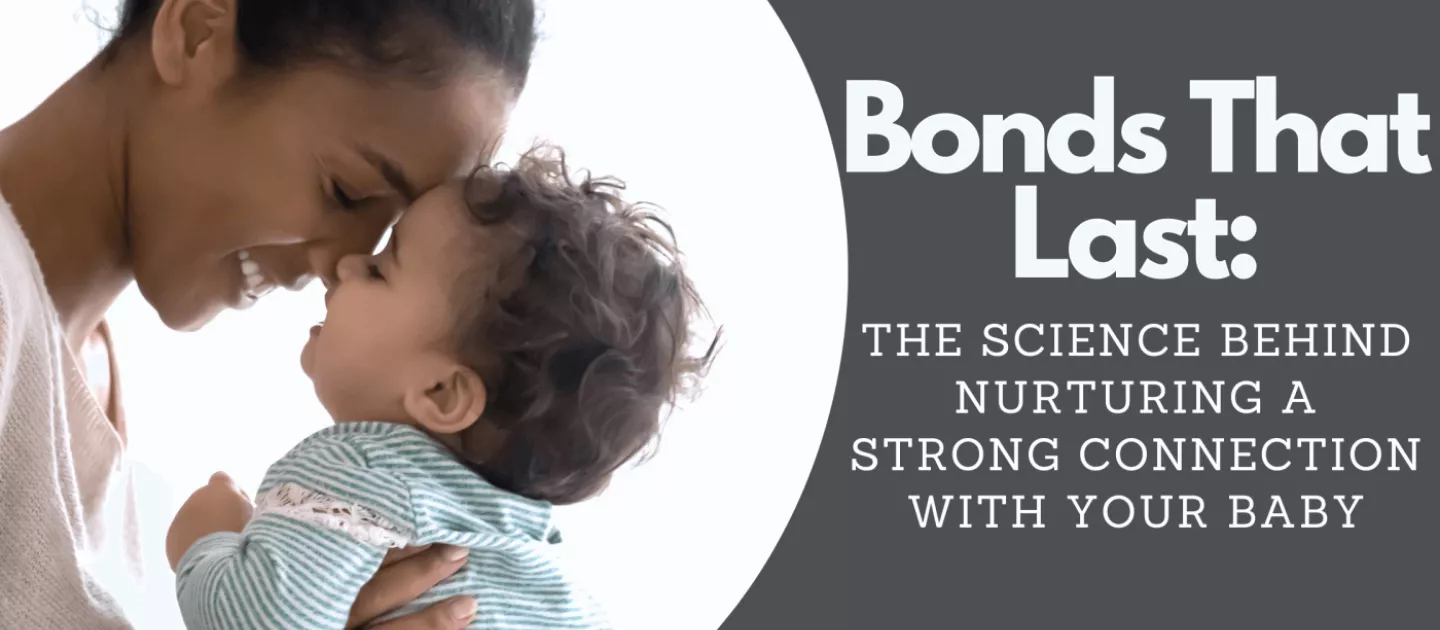Bringing a little bundle of joy into the world is an incredible adventure, and one of the most special parts is creating bonds that will last with your baby. But have you ever wondered what really goes on behind the scenes as you form that magical connection? Let's take a dive into the science behind nurturing a strong connection with your baby, including the release of oxytocin, attachment theory, and some down-to-earth tips for nurturing an unbreakable parent-child bond.
Neural Basis of Bonding
The process of bonding with your child is intricately linked to the brain's neural pathways and the release of various neurotransmitters and hormones. Research has shown that interactions between parents and children can lead to the activation of brain regions associated with reward, empathy, and social understanding. For example, when a parent engages in nurturing behaviors such as playing, cuddling, or soothing a distressed child, it triggers the release of oxytocin and dopamine, which are known to play key roles in bonding and attachment.
The Biological Magic: Oxytocin, the "Love Hormone"
So, what's the secret ingredient that makes bonding with your baby feel so amazing? It's oxytocin, often called the "love hormone." This super hormone is like a warm hug for your brain and your baby's. Here's the cool part: when you show your baby love and affection, your oxytocin levels shoot up, creating a beautiful loop of love and connection. As your oxytocin levels rise, you feel even more love and trust towards your baby, and this, in turn, strengthens your bond even further. It's like a happy dance of love hormones that builds an unbreakable connection between you and your little one.
Attachment Theory: The Heart of Parent-Child Relationships
Now, let's talk about attachment theory. Picture it as the blueprint for the incredible bond you share with your baby. According to this theory, when you respond consistently and lovingly to your baby's needs, you're helping them build a secure attachment – a deep sense of trust and safety that becomes the foundation for their emotional well-being.
Building Emotional Resilience
A secure attachment does wonders for your baby's emotional strength. It gives them the courage to explore the world around them and the comfort of knowing they can always turn to you for love and support. This superpower of emotional resilience sticks with them as they grow, helping them tackle life's challenges with confidence and grace.
Mirror Neurons and Emotional Attunement
Mirror neurons, specialized cells in the brain, play a significant role in social cognition and empathy. When parents interact with their children, especially during emotionally charged moments, mirror neurons facilitate the understanding and sharing of emotions. This emotional attunement strengthens the connection between parent and child, nurturing empathy, emotional regulation, and a deep sense of understanding and validation.
Real-Life Tips for Growing a Super Strong Bond
Snuggle Time: Power of Skin-to-Skin Love
Let's talk about the magic of skin-to-skin cuddles! This isn't just about feeling warm and cozy – it's a powerhouse of benefits for both you and your baby. When you snuggle up with your little one, it helps regulate their body temperature, keeps their heart rate steady, and triggers a burst of oxytocin for both of you. It's like a love explosion that strengthens your bond in the sweetest way possible.
Heart-to-Heart Connection: Being There for Your Baby
When your baby needs you, they're not just asking for a diaper change or a cuddle – they're reaching out for your love and comfort. By responding to their cues with warmth and care, you're telling them, "I'm here for you." This simple act of love builds a bridge of trust and understanding between you and your baby that lasts a lifetime.
Playtime Fun: Making Moments Count
Who knew that something as simple as playing could work wonders for your bond? When you read, sing, or play with your baby, you're not just having fun – you're creating precious moments of connection. These shared activities are like little love notes that strengthen the beautiful bond you share with your baby.
Comfort in Routines: Creating a Safe and Happy Space
Routines aren't just about getting things done – they're about creating a cozy, predictable world for your baby. When your little one knows what to expect, it makes them feel safe and secure, strengthening the bond between you and your baby. It's like giving them a big, warm hug of love and predictability every day.
The Power of Communication: Speaking Baby
Communication is a two-way street, and even though your baby may not be speaking in full sentences just yet, they are communicating with you in their own special way. From coos and gurgles to facial expressions and body movements, your baby is sending you signals about their needs, feelings, and experiences. By tuning into these cues and responding with warmth and attentiveness, you're not only meeting their immediate needs but also laying the groundwork for healthy communication and connection in the future.
In Conclusion
Building a strong bond with your baby is a multifaceted journey that encompasses love, science, and the magic of everyday moments. By embracing the biological and psychological aspects of parent-child bonding, you're laying the groundwork for a deep and enduring connection with your little one. From the release of oxytocin and the principles of attachment theory to the power of communication, emotional attunement, and the joy of play, every interaction with your baby becomes an opportunity to strengthen your bond and nurture their development. So, cherish these moments, revel in the science, and celebrate the extraordinary journey of building an unbreakable connection with your baby.
References:
https://www.ncbi.nlm.nih.gov/pmc/articles/PMC6838998/
https://www.ncbi.nlm.nih.gov/pmc/articles/PMC3656367/
https://www.ncbi.nlm.nih.gov/pmc/articles/PMC6283620/
Disclaimer: Banking cord blood does not guarantee that treatment will work, and only a doctor can determine when it can be used. Revvity and ViaCord do not endorse or make recommendations with respect to research, medication, or treatments. All information presented is for informational purposes only and is not intended as medical advice.












